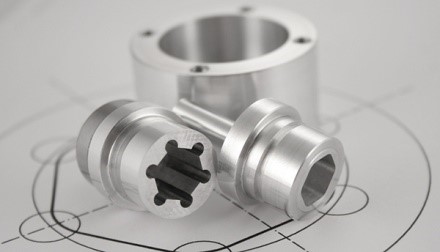Rapid prototyping is a widely used fast fabrication of part, model, or assembly using a 3D computer-aided design. Most of the time, the creation of a part, model, or assembly is completed using additive manufacturing which is commonly known as 3D printing.
When the design closely matches the proposed finished product, it is known as a high-fidelity prototype. Contrastingly, a low fidelity prototype is where there is a marked difference between the prototype and the final product.

Further in this blog, we will be going through the different types of rapid prototyping. So make sure to spend the next few minutes reading the blog.
Stereolithography (SLA) or Vat Photopolymerization
This is a quick and affordable additive manufacturing process. This was the first method of 3D printing to work. This process utilizes a tank full of photosensitive liquid. Layer-by-layer, this liquid turned into solid using ultraviolet rays, controlled by a computer. It is an irreversible process and the SLA parts cannot be turned into liquid.
Selective Laser Sintering (SLS)
It is an additive manufacturing technology used for plastic as well as metal prototyping. It uses a high-power laser and layers powder to heat and sinter the powdered material. SLS parts are considerably weaker than SLA. But SLS is low cost and requires less labor and time while providing high productivity. Also, the finished product has a rough surface which requires more work to achieve the desired finished product.
Selective Laser Melting or (SLM) Powder Bed Fusion (PBF)
This process is comparatively expensive and provides strong, multifaceted parts. SLM is usually utilized by automotive, aerospace, medical as well as the defense industry. Selective laser melting either uses an electron beam or a high-power laser to melt layer-by-layer and fuse powder together in order to create a prototype or production part. It uses any powder base material however the most frequently used ones are cobalt chrome alloys, aluminum, stainless steel, copper, and titanium.
Fused Deposition Modeling (FDM)
FDM, also known as material jetting, is an additive manufacturing process that is an affordable, fast, cheap, and easy-to-handle process. That’s why it is ideal for product development. It can be located in several non-industrial desktop 3D printers. FDM creates a physical object from the bottom up using a thermoplastic filament. The thermoplastic filament melts inside a printing nozzle barrel. The printer nozzle moves back and forth to place the liquid layer-by-layer using a computer deposition program.
Binder Jetting
This additive manufacturing technique allows printing one or more parts simultaneously. Compared to SLS, the parts are not created as strongly. This process uses nozzles to spray liquid binding agents to joint power particles for creating on the layer of the piece. The powder is added layer-by-layer then compacted and spread by a roller and a binder is added. Simply put, the parts are created through the layering of powder and binder.
To sum up
These processes are utilized by product designers, engineers, and development teams for the rapid manufacturing of prototypes. Prototypes are extremely beneficial for product designers as they help in the visualization, designing, and development of the manufacturing process before mass production. If you are looking for the best rapid prototyping services, no need to look further. Contact the experts now to get details.
















